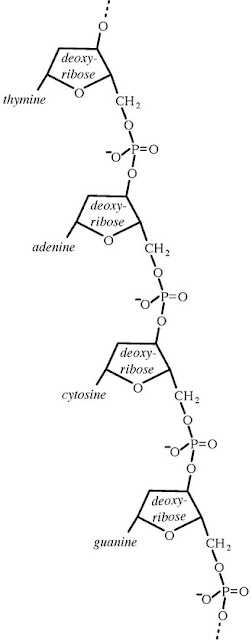DNA as Genetic Material-Experimental Proof
Part III- The Blender Experiments- Dr. C
R Meera
An
elegant confirmation of genetic nature of DNA came from the experiments with E.coli
phage T2 by Hershey and Chase.
·
This experiment is called Blender
experiment as “Kitchen Blender” was used as the major apparatus.
·
Done by Alfred Hershey and Martha Chase,
who demonstrated that DNA injected by phage particle into bacterium contains
all information required to synthesize progeny phage particles.
·
T2 phage used in the experiment
consisted of DNA encased in a protein shell.
·
Radioactive phosphate and sulfur were used
to mark the phage.
·
DNA is the only phosphorous-containing
particle in the phage. So radioactive phosphate would be incorporated in phage
DNA during multiplication in a media containing radioactive phosphate .
·
Proteins of the shell which contain the
amino acids methionine and cysteine, have only sulfur atoms in it. So protein
shells would take up the radioactive sulfur during multiplication in a media
containing radioactive sulfur.
·
In this experiment, Phage with
radioactive DNA was used which was prepared by growing phages in a nutrient
medium in which radioactive phosphate
(32PO43-)
is the sole source of phosphorus.
·
Phage with radioactive capsid- was
also used which was prepared by growing phages in a medium containing
radioactive sulfur (35SO42-) as the sole
source of sulfur.
·
These two kinds of radiolabeled phages
were used in the infection of E.coli so that phage DNA and capsid can be
located by the radioactivity.
·
T2 phage has a long tail with
which it attaches to the host bacterium, E.coli. Hershey and Chase showed
that the attached phage can be separated from the bacteria by violent agitation
using the kitchen blender.
·
They conducted two experiments known as 35S
and 32P Experiments.
35S Experiment
·
Phage with radioactive capsid was
also used in this experiment which was prepared by growing phages in a medium
containing radioactive sulfur.
·
S labeled phages were allowed to adsorb to
bacteria for a few minutes.
·
Phage-attached bacteria were separated
from unattached phages by centrifugation of the mixture and the pellet formed
is the phage-bacterium complex.
·
This complex was resuspended in a liquid
and blended and the suspension was again centrifuged.
·
Now, the pellet received is bacteria and
the supernatant was also collected.
·
80% of the radioactivity or 35S was in the supernatant
and 20% was in the pellet. This experiment thus showed that capsid remains
outside the bacteria and not acting as the genetic material.
·
Many years later, it was found that 20%
radioactivity in the pellet was due to the tail segment of the phage being too
tightly attached to the bacterial cell that were not removed by blending.
32P
Experiment
·
Phage with radioactive DNA was
used in this experiment which was prepared by growing phages in a nutrient
medium containing radioactive phosphate. The experiment was performed same as
above.
·
A very different result with 70% of
radioactivity or 32P was found in the pellet (ie; associated
with the bacteria) and 30% radioactivity in the supernatant.
·
30% radioactivity in the supernatant may
be due to the breakage of bacteria during the blending process or due to the
defective phage particles that could not inject their DNA into the bacterial
host.
·
This experiment proved that the DNA is
getting into the bacterial cell and hence acting as the genetic material.
·
Confirmation Experiment: Pellet
was resuspended in the growth medium and re-incubated. It was capable of phage
production, indicating that the genetic message for phage progeny production
had been introduced by phage DNA, not by phage protein. Thus, DNA is the
genetic material.
·
Later, a series of experiments called
“transfer experiments” analyzed the progeny for 35S and 32P.
·
35S
was
not found in the progeny.
·
Half of 32P injected was found in the
progeny.
·
Interpretation: Transfer of only half of 32P
in progeny is because that DNA is selected at random for packing into
protein coats.





